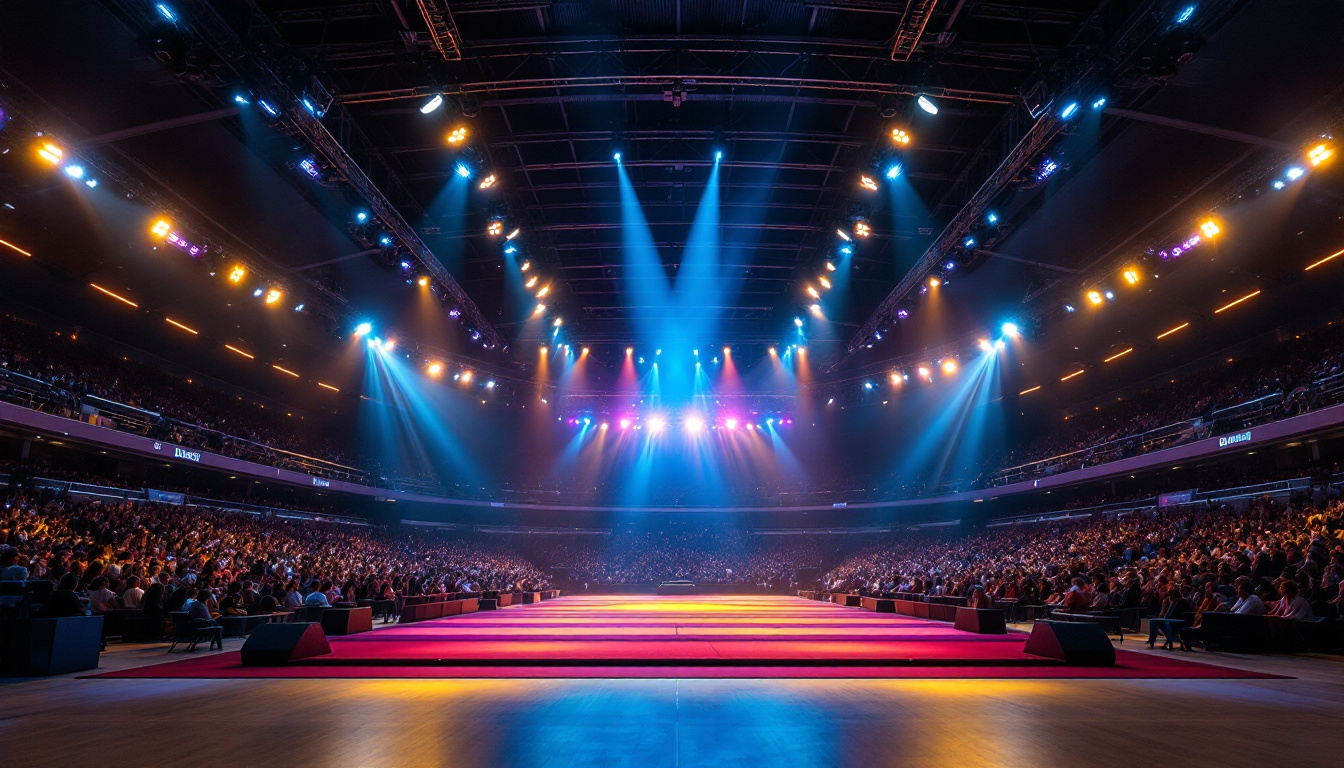
In the ever-evolving world of lighting technology, the 13-watt compact fluorescent lamp (CFL) has carved out a significant niche. With its energy efficiency and longevity, it presents a compelling option for various lighting applications. However, as new technologies emerge, lighting contractors must evaluate whether CFLs remain the best choice compared to alternatives like LED and incandescent bulbs. This article explores the benefits of 13-watt CFLs, compares them with other lighting solutions, and provides guidance for contractors on making informed decisions.
One of the most significant advantages of 13-watt compact fluorescent bulbs is their energy efficiency. Consuming only a fraction of the power that traditional incandescent bulbs require, CFLs can produce the same amount of light while using less energy. This efficiency translates into reduced electricity bills for consumers and businesses alike, making CFLs an attractive option for budget-conscious clients.
Moreover, the energy savings extend beyond just the immediate cost of electricity. By reducing energy consumption, CFLs contribute to lower greenhouse gas emissions, making them a more environmentally friendly choice. For contractors, promoting energy-efficient solutions can enhance their reputation as environmentally responsible professionals. In fact, many utility companies offer rebates or incentives for customers who switch to energy-efficient lighting, further sweetening the deal for those considering a transition to CFLs.
Another compelling reason to consider 13-watt CFLs is their impressive lifespan. Typically lasting up to 10,000 hours, these bulbs outlast traditional incandescent options significantly. This longevity means fewer replacements, reducing maintenance costs and inconvenience for clients.
Additionally, CFLs are designed to withstand a certain level of impact and vibration, making them suitable for various applications, including commercial and industrial settings. Contractors can confidently recommend these bulbs for environments where durability is paramount. Furthermore, the reduced frequency of bulb replacements not only saves money but also minimizes waste, aligning with sustainable practices that many businesses are striving to adopt in today’s eco-conscious market.
13-watt compact fluorescents come in various shapes and sizes, making them versatile for multiple applications. Whether for residential lighting, office spaces, or retail environments, CFLs can be adapted to meet specific lighting needs. Their availability in different color temperatures also allows contractors to tailor lighting solutions to suit the aesthetic preferences of clients.
This adaptability makes CFLs a go-to choice for many contractors, as they can provide a range of lighting solutions without needing to stock various types of bulbs. This can streamline inventory management and simplify the decision-making process for clients. Furthermore, the ability to choose from warm, cool, or daylight color temperatures means that spaces can be transformed to create the desired ambiance, whether it’s a cozy living room or a bright, energizing workspace. As more clients become aware of the importance of lighting in influencing mood and productivity, the demand for such versatile solutions is likely to grow.
Light Emitting Diodes (LEDs) have gained significant traction in the lighting market, often touted as the superior alternative to both CFLs and incandescent bulbs. While 13-watt CFLs are energy-efficient, LEDs take efficiency to another level. Consuming even less power than CFLs, they can produce the same brightness while lasting up to 25,000 hours or more.
For contractors, the advantages of LEDs extend beyond energy savings. The technology has advanced to the point where LEDs now offer a wide range of color temperatures and designs, allowing for greater customization. Furthermore, LEDs do not contain mercury, making them a safer option for disposal compared to CFLs.
However, the initial cost of LED bulbs can be higher than that of CFLs. While the long-term savings on energy bills and replacements can offset this upfront investment, contractors must weigh the cost against the immediate budget constraints of their clients. Additionally, the versatility of LED technology means it can be integrated into smart home systems, providing users with the ability to control lighting remotely or set schedules, further enhancing energy efficiency and convenience.
Moreover, LEDs are known for their durability and resistance to shock and vibration, making them ideal for both residential and commercial applications. This robustness means fewer replacements over time, which can be particularly beneficial in high-traffic areas or outdoor settings where traditional bulbs might fail more frequently. As awareness of environmental issues grows, many consumers are also drawn to the lower carbon footprint associated with LED usage, reinforcing the shift towards more sustainable lighting solutions.
Despite the rise of energy-efficient options, incandescent bulbs still hold a place in the market. Known for their warm light and excellent color rendering, they are often favored for aesthetic purposes. However, their energy efficiency is significantly lower than that of both CFLs and LEDs. Incandescent bulbs typically consume more wattage to produce the same amount of light, leading to higher electricity costs.
From a contractor’s perspective, recommending incandescent bulbs may be suitable for specific applications where ambiance is critical. However, it is essential to educate clients about the long-term costs associated with their use. The shorter lifespan of incandescent bulbs also means more frequent replacements, which can be a disadvantage in terms of maintenance.
Additionally, the manufacturing process of incandescent bulbs can be less environmentally friendly, as they often require more energy to produce compared to their LED counterparts. This factor can be a significant consideration for environmentally conscious clients. While incandescent bulbs can provide a nostalgic feel and are often used in decorative fixtures, the trend is shifting towards more energy-efficient solutions that align with modern sustainability goals. As a result, contractors may find themselves needing to balance the aesthetic desires of their clients with the practical benefits of newer technologies.
Furthermore, the recent advancements in halogen incandescent bulbs, which offer slightly improved efficiency and longer lifespans, have added another layer to the conversation. These bulbs can provide a middle ground for clients who are hesitant to fully transition to LED technology while still seeking better performance than traditional incandescents. Understanding these nuances can help contractors guide their clients toward the best lighting solutions for their specific needs.
When choosing between 13-watt CFLs, LEDs, and incandescent bulbs, cost is a significant factor. While CFLs are generally more affordable upfront than LEDs, contractors must consider the long-term savings associated with each option. LEDs, despite their higher initial price, can lead to substantial savings on energy bills over time.
Contractors should also factor in the potential costs of replacements. With CFLs lasting around 10,000 hours and LEDs lasting up to 25,000 hours, the longer lifespan of LEDs can result in fewer replacements and lower maintenance costs. This aspect can be a selling point when discussing options with clients.
Many regions offer incentives and rebates for energy-efficient lighting solutions, including CFLs and LEDs. Contractors should stay informed about available programs to help clients take advantage of these financial benefits. By promoting energy-efficient options, contractors can enhance their value proposition and support clients in making cost-effective decisions.
Additionally, educating clients about the potential for reduced energy costs and available rebates can facilitate more informed discussions and lead to increased sales of energy-efficient products.
As environmental concerns continue to rise, many consumers are seeking ways to minimize their carbon footprint. Lighting contractors can play a crucial role in this effort by recommending energy-efficient solutions like 13-watt CFLs and LEDs. Both options significantly reduce energy consumption compared to traditional incandescent bulbs, leading to lower greenhouse gas emissions.
By choosing CFLs or LEDs, clients contribute to a more sustainable future, and contractors can position themselves as leaders in promoting environmentally responsible practices. This alignment with sustainability can enhance a contractor’s reputation and attract clients who prioritize eco-friendly solutions.
While CFLs offer numerous benefits, it is essential to consider their disposal. Compact fluorescent bulbs contain small amounts of mercury, which can be harmful to the environment if not disposed of properly. Contractors should educate clients about safe disposal methods and encourage recycling programs when available.
In contrast, LEDs do not contain hazardous materials, making them a more environmentally friendly option in this regard. This aspect can be an essential consideration for contractors when discussing the long-term implications of different lighting choices with clients.
Effective communication is vital for lighting contractors when discussing options with clients. Understanding the specific needs and preferences of each client can guide the selection process. Factors such as the intended use of the lighting, desired ambiance, and budget constraints should all be considered.
Contractors should take the time to explain the benefits and drawbacks of each lighting option, helping clients make informed decisions. Providing clear comparisons between 13-watt CFLs, LEDs, and incandescent bulbs can empower clients to choose the best solution for their unique situations.
To effectively promote 13-watt CFLs and their alternatives, contractors should focus on demonstrating value. This can include showcasing energy savings, longevity, and environmental benefits. Providing case studies or testimonials from previous clients can also help illustrate the advantages of energy-efficient lighting solutions.
Additionally, offering a range of options allows clients to select the best fit for their needs. By presenting a comprehensive overview of available products, contractors can position themselves as knowledgeable experts in the field.
In the competitive landscape of lighting solutions, the 13-watt compact fluorescent bulb remains a viable option for many applications. However, as technology advances, alternatives like LED bulbs are gaining popularity due to their superior energy efficiency and longevity. Lighting contractors must carefully consider the needs of their clients, weighing the benefits and drawbacks of each option.
Ultimately, the decision should be guided by a combination of factors, including energy efficiency, cost, environmental impact, and client preferences. By staying informed about the latest developments in lighting technology and understanding the unique needs of each client, contractors can provide valuable recommendations that lead to successful lighting solutions.
As the industry continues to evolve, embracing energy-efficient solutions will not only benefit clients but also contribute to a more sustainable future. Contractors who prioritize education, communication, and environmental responsibility will undoubtedly thrive in this dynamic field.
Ready to elevate your lighting solutions with the best in energy efficiency and cost-effectiveness? Look no further than LumenWholesale for all your lighting needs. Our spec-grade lighting products are designed to meet the highest industry standards, ensuring you deliver reliable and high-performance lighting to your clients. With unbeatable wholesale prices and the convenience of free shipping on bulk orders, you can trust LumenWholesale to provide premium lighting without the hidden fees or compromises. Make the smart choice for your projects and explore our collection at the best value today.

Discover how indoor arenas can transform lighting projects by providing the perfect environment for innovative designs and energy-efficient solutions.

Discover essential strategies and expert advice for lighting contractors to master the art of using 3500K lighting.

Discover how sodium light ballasts can revolutionize your lighting projects.

Discover essential insights for lighting contractors on choosing and installing LED outside shop lights.